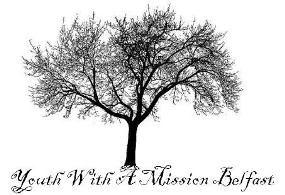Friday, December 14, 2007
Out of my skull...by Jon Hatch, YWAM Belfast Reconciliation DTS staff
 There are few things in the world lonelier than being a Christian who finds beauty in the human skull. But I do. I think they look incredible. Also, beyond their physical beauty, they are a mastery of creative engineering. In my humble opinion, a Christian who is trying to make the case for God’s creative expertise need look no further than about an inch into their own head. So much of what we find physically amazing about ourselves and others- eyes, brain, cheeks, lovely face, lips and teeth- it’s all a sack of meat without your skull.
There are few things in the world lonelier than being a Christian who finds beauty in the human skull. But I do. I think they look incredible. Also, beyond their physical beauty, they are a mastery of creative engineering. In my humble opinion, a Christian who is trying to make the case for God’s creative expertise need look no further than about an inch into their own head. So much of what we find physically amazing about ourselves and others- eyes, brain, cheeks, lovely face, lips and teeth- it’s all a sack of meat without your skull.Of course, our culture thinks of the skull primarily in its assigned role as a symbol of fear and death. Fair enough, but if you’re reading this right now, your skull is very much alive, 22 living, perfectly integrated bones supporting your face and protecting your brain and sinus cavity. And anyway, if I remember correctly, Christ told us to fear not, certainly not death.
My initial love of the skull came from being a teenager during the early ‘80s hardcore punk scene that percolated under the radar of my native New Jersey and New York. We scrawled them on our school notebooks (out of sight of the teachers in my fundamentalist Baptist school), printed them on gig flyers, t-shirts, and record covers (yes, the CD had yet to be invented). Simply put, we thought skulls looked cool and hard. More seriously, we were Reagan’s children, and many of us were plain scared of getting drafted to fight in El Salvador or getting nuked, either by accident or by political resolve.
The image of the skull is a powerful one. There’s just something about it that commands attention, something that says, hey, no fooling around; this is serious. Don’t go in here. Don’t drink this. Whatever the message is, you can be pretty certain that it’s a matter of life and death. If you see a skull, you are immediately alert. And in a world that seems to be all about keeping us in a state of catatonic acquiescence- buy, shop, spend, eat, drink, watch TV- the skull is a reminder of St. Peter’s admonishment: “Be alert! Wake up! Your enemy the devil, like a roaring lion, prowls around for someone to devour (I Peter 5:8)”.
St. Peter reminds us that we live our lives in the shadow of death, and that is possibly why we find that image of the skull so disconcerting: it is a reminder of our mortality. Unless you are a surgeon, you’ll never see a living skull, only a dead one. But if we’re realistic, death is the one aspect of life in which all will eventually share. The classical poet Claudian noted that ‘death levels all things’. In this sense, the skull is a symbol of human equality, and a perfect representation of why racism, sexism, and all other forms of prejudice are so monumentally stupid: no matter whom you are, where you’re from, or what you look like, about in inch below the surface we are all remarkably similar. And when we die, we will all look the same. You might hate blacks, gays, women, Muslims, or whoever, but don’t kid yourself; below the surface, we all have a skull.
My painting came from a discussion topic during a seminar facilitated by the YWAM Belfast Forgiveness staff team. We were asked to do an artistic representation of our feelings about whether the impetus to forgive originated in the heart or the head. In contemplating this, I wanted to represent my belief that forgiveness is often a conscious decision. It very often comes from our head, but make no mistake: it comes from the deepest part of our head; that part of the head that reflects our common humanity; that part of the head alive, awake, and alert to our own mortality; that part of our head that might be horrifically exposed if our lack of forgiveness and reconciliation ferments into hatred; that part of our head that knows how deadly serious the issues of forgiveness and reconciliation are.
And for me, that’s the skull.
We in YWAM Belfast work on the street in the Shankill Road area where, in 1969, the second death of the most recent phase of Ireland’s ongoing conflict occurred. That conflict, which springs from distorted visions of nationality, faith, identity and belonging, eventually claimed over 3500 lives over the next thirty years. Many people we live and work amongst have known nothing but fear, anger, revenge, and hate, either their own or inherited. Our work takes us to schools, youth clubs, old folks’ homes, and the streets. We talk, teach, and pray. We cry and get tired, celebrate and enjoy each other, often in the same day. It is hard but joyous work.
Where we live, the Gospel is about forgiveness; helping individuals and the community along the journey of healing, actively choosing to remember the hurt in a different way, and moving on. Until that happens, Northern Ireland will never know true peace.
